| Recent Featured Videos and Articles | Eastern “Orthodoxy” Refuted | How To Avoid Sin | The Antichrist Identified! | What Fake Christians Get Wrong About Ephesians | Why So Many Can't Believe | “Magicians” Prove A Spiritual World Exists | Amazing Evidence For God | News Links |
| Vatican II “Catholic” Church Exposed | Steps To Convert | Outside The Church There Is No Salvation | E-Exchanges | The Holy Rosary | Padre Pio | Traditional Catholic Issues And Groups | Help Save Souls: Donate |  |
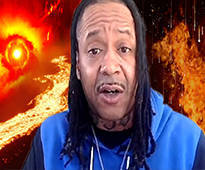
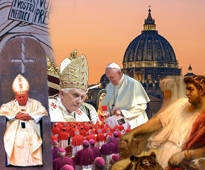
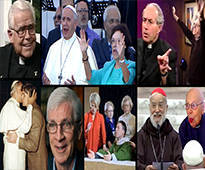
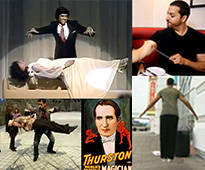
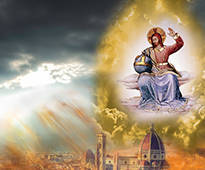

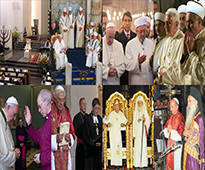


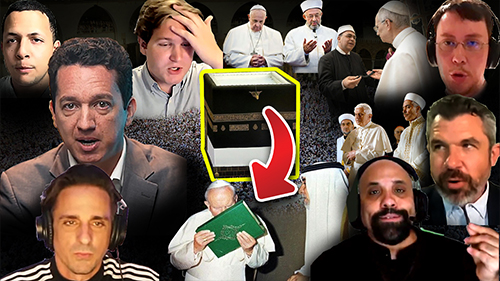 " />
" /> " />
" /> " />
" /> " />
" /> " />
" />




The Revealing Heresies in Msgr. Van Noort's Pre-Vatican II Dogmatic Theology Manual
BRO. PETER DIMOND
IN THIS ARTICLE:
• VAN NOORT REJECTS AND REDEFINES THE TWO RELATED DOGMAS: 1) OUTSIDE THE CHURCH THERE IS NO SALVATION AND 2) WITHOUT THE CATHOLIC FAITH THERE IS NO SALVATION
• VAN NOORT TEACHES THAT PAGANS WHO DON’T BELIEVE IN CHRIST AND DON’T HAVE THE CATHOLIC FAITH CAN BE SAVED THROUGH ‘BAPTISM OF DESIRE’
• THE ‘CATHOLIC FAITH’, NOT JUST A ‘SUPERNATURAL’ FAITH, IS REQUIRED FOR SALVATION
• ‘TRADITIONAL’ AND SEDEVACANTIST PRIESTS EMPHASIZE 'SUPERNATURAL' FAITH AND DENY CATHOLIC DOGMA ON THE NECESSITY OF 'CATHOLIC' FAITH
• VAN NOORT'S BOOK TEACHES THAT SALVATION WITHOUT THE CATHOLIC FAITH AND OUTSIDE THE CHURCH CANNOT BE SAID TO BE RARE
• VAN NOORT’S BOOK TEACHES THAT “QUANTITIES AND QUANTITIES” OF NON-CATHOLICS ARE ACTUALLY INSIDE THE CHURCH
• THESE FACTS PROVE ONCE AGAIN THAT SUPPORTERS OF 'BAPTISM OF DESIRE' ARE WRONG IN BOTH DOCTRINE AND METHODOLOGY
• IF THEY WERE CONSISTENT, MODERN SUPPORTERS OF BOD/SALVATION OUTSIDE THE CHURCH WOULD ADHERE TO VATICAN II
Obstinate supporters of ‘baptism of desire’ (BOD) and salvation outside the Church frequently base their arguments and positions on the teaching of theology manuals produced prior to Vatican II. Since they resist faith in what Jesus Christ bestowed upon St. Peter and his successors, they are inclined to follow the doctrines of men who were not given the protection of infallibility. Many supporters of BOD actually argue and believe that theology manuals and texts, if they were produced by ‘approved’ priests and/or bishops in ‘good standing’ prior to Vatican II, are necessarily safe or reflective of sound Catholic teaching. They are quite wrong. They don’t understand what the Magisterium is and what it is not, when it is exercised and when it is not. Unless a theology manual is simply repeating what the Magisterium has already taught, the conclusions found in it are not protected or guaranteed by the Magisterium. Moreover, the power of the Magisterium is not exercised when such works are approved by bishops, or even by popes in a non-solemn or universal way. Indeed, this article will demonstrate quite clearly how one of the most popular theology manuals in our day is rife with modernist heresy of the worst kind.
It’s a sad fact that almost every theology manual produced in the decades leading up to Vatican II was heretical on the topic of salvation. Those books are not safe, but extremely dangerous and damaging, when dealing with the issues of Baptism and Outside the Church There Is No Salvation. That’s precisely why the bishops at Vatican II so willingly accepted the documents on false ecumenism, religious liberty, etc. Those bishops didn’t become heretics and religious indifferentists in a sudden flash at the Second Vatican Council. No, almost all of them were already heretics on the topic of salvation well before Vatican II. This article will further prove that fact.
The book we will discuss is Monsignor Van Noort’s work Dogmatic Theology, Volume II on Christ’s Church. This book is popular among ‘traditionalists’. It’s frequently cited by sedevacantists as an allegedly sound and even authoritative exposition of true Catholic teaching. In fact, many of these deluded people, when expressing their faulty methodology, assert that Catholics should not be citing or utilizing dogmatic texts (the highest pronouncements of the Church). No, according to them, people should simply submit to and follow the teaching of an ‘approved’ theologian such as Monsignor Van Noort, and accept what he says about the teaching of the Church. Some of these BOD supporters will even reference Van Noort (and others like him) as if his teaching ends the debate on a topic! They are quite deceived, as we will see. It was heretics such as Van Noort who paved the way for the apostate Second Vatican Council. In fact, almost all ‘traditionalist’ and sedevacantist priests in our day, who consider themselves anti-modernist traditionalists, have actually adopted a completely modernist view of salvation, articulated by heretics before Vatican II.
[NOTE: Van Noort’s work was translated and revised by John J. Castelot, S.S., S.T.D., S.S.L. & William R. Murphy, S.S., S.T.D. It was published in English by the Newman Press in 1957. Since the 1957 edition, revised by Castelot and Murphy, is the volume typically cited and used by ‘traditionalists,’ it’s the version of Van Noort’s book that I will cite and comment upon in this article. Volume II does not specify which parts, notes, etc. were added by Castelot and/or Murphy during the revision. The preface does mention that revisions were made to chapters dealing with the Mystical Body and the necessity of the Church for salvation. However, it's not clear precisely which lines or thoughts came from the editors. It's likely that most of the body of the text represents the teaching of Van Noort, with the footnotes probably coming from the editors. However, considering that the Castelot and Murphy edition is the one that’s used and recommended so frequently, it makes no practical difference which notes, etc. might have been added by Castelot and Murphy. The teaching found in the book written by Van Noort, and edited by Castelot and Murphy, is what’s being promoted and accepted by many ‘traditionalists’ as orthodox and sound Catholic teaching.]
VAN NOORT REJECTS AND REDEFINES THE TWO RELATED DOGMAS: 1) OUTSIDE THE CHURCH THERE IS NO SALVATION AND 2) WITHOUT THE CATHOLIC FAITH THERE IS NO SALVATION
Here Van Noort states that the solemnly defined dogma, Outside the Church There is No Salvation, should be understood to mean that only someone who is outside the Church “by his own fault” cannot be saved. That is heresy and modernism. The dogma Outside the Church There is No Salvation does not teach that only someone who is outside the Church “by his own fault” will not be saved. Rather, it teaches that all who die outside the Church are not saved, and that all who die without the Catholic faith are not saved. The Church has proclaimed this dogma from the Chair of St. Peter approximately seven different times. The formulation is always the same. Not once did the Church define that only someone outside the Church “by his own fault” cannot be saved, as Van Noort declares.
Typical of heretics, Van Noort has redefined the dogma in a way that’s 1) not found in any dogmatic definition, and 2) contrary to the proclamations of the dogmatic definitions. Van Noort’s statement demonstrates that he was a modernist enemy of the faith, with no fidelity to the highest magisterial pronouncements and no understanding of how they are to be handled. Here's the actual teaching of the Church, in its defined and unchangeable form.
Dogmas must be believed and maintained as the Church has declared them. Anything else is heresy.
By the way, those who believe they can depart from the dogma Outside the Church There is No Salvation as it has been defined and declared, based on their understanding of a few fallible, non-universal statements of Pope Pius IX, are very deceived. The few statements from Pius IX, typically cited by heretics on this matter, were not even addressed to the universal Church. They were not infallible. They hold no weight in comparison to the aforementioned dogmatic definitions. Furthermore, the heretics misuse, distort and misinterpret them in the process of denying the dogma. The notion that all the dogmatic definitions on this matter should be set aside, and that the entire issue hinges on non-universal, non-infallible (and misinterpreted) statements of Pope Pius IX, is absurd. Pius IX's misinterpreted and fallible statements are discussed in our salvation book, and we plan on covering the issue in more detail in a future video.
VAN NOORT TEACHES THAT PAGANS WHO DON’T BELIEVE IN CHRIST AND DON’T HAVE THE CATHOLIC FAITH CAN BE SAVED THROUGH “BAPTISM OF DESIRE”
Here the heretic Van Noort teaches the notion of implicit faith, and that a “pagan” can be saved without the Catholic faith. That is directly contrary to the aforementioned dogma defined by the Council of Florence (see above). The Church specifically defined that all who die as “pagans” are lost. (By the way, to preemptively refute a typically dishonest response on this matter, we will point out what is obvious to honest people: if Van Noort didn't mean that the person is a pagan, then he would not have described the person as a pagan.) Van Noort omits the requirement that the individual must know Jesus Christ and have the Catholic faith to be saved. He ignored that dogma because he was not a Catholic. This brings us to an important point.
THE ‘CATHOLIC FAITH’, NOT JUST A ‘SUPERNATURAL’ FAITH, IS REQUIRED FOR SALVATION
Heretics who write on this matter often ignore the dogma that one must have THE CATHOLIC FAITH to be saved. Remember, the Church doesn’t merely declare that one must be inside the Church to be saved. It also declares that one must have the Catholic faith to be saved. The two truths are inseparable, of course, but examining each aspect of this dogma becomes important when refuting heretics. The supporters of BOD in our day ignore the dogma that one must have THE CATHOLIC FAITH to be saved simply because it’s impossible to twist their heretical view into language that comports with the dogma that no one is saved without the Catholic faith. After all, how can one who is a ‘pagan’ (who doesn’t believe in Jesus Christ and the Trinity) also have the Catholic faith? How can a pagan and a Catholic both be in the one Church? - the one Church, which, by definition, only has ONE FAITH AND ONE LORD? It doesn’t make any sense. So, the BOD heretics typically avoid the dogmatic pronouncements which declare that one must have the Catholic faith to be saved.
‘TRADITIONAL’ AND SEDEVACANTIST PRIESTS EMPHASIZE 'SUPERNATURAL' FAITH AND DENY CATHOLIC DOGMA ON THE NECESSITY OF 'CATHOLIC' FAITH
On this point it’s very interesting to consider the comments of sedevacantist priests Anthony Cekada and Donald Sanborn. In a theological discussion some months ago, they were asked whether an atheist can be saved. The person who posed the question pointed out that their view on ‘baptism of desire’, ignorance, salvation, etc., according to some critics, requires them to believe that an atheist can be saved. Sanborn, with Cekada agreeing, objected. He asserted that an atheist cannot be saved because one must have ‘supernatural faith’ to be saved, and ‘supernatural faith’ absolutely requires, at the bare minimum, belief in God and that He's a rewarder. Sanborn emphasized that belief in those two dogmas (the existence of God and that He's a rewarder) is what’s absolutely necessary for salvation, for without such belief an act of faith cannot be made.
So, according to them, the requirement to have ‘supernatural’ faith (a belief that God exists and that He is a rewarder) would exclude an atheist. But notice what such an assertion reveals. It reveals that their position does not exclude Jews, Muslims and many others from salvation: for Jews, Muslims and many other non-Catholics claim to believe that God exists and that He's a rewarder.
In short, their position on ‘supernatural’ faith denies the dogma that ‘Catholic’ faith is what’s absolutely necessary for salvation. They thus depart from the revelation of Jesus Christ and the dogmatic teaching of the Catholic Church on salvation.
The Son of God became man in order to redeem the world and reveal the Catholic faith. The faith Jesus Christ came to reveal (the ‘Catholic’ or ‘universal’ Christian faith) is not merely a belief that 1) God exists and 2) that He's a rewarder. No, those truths were known in the Old Testament. The Catholic faith, which the Lord Jesus Christ came to reveal, of course includes those truths (Hebrews 11:6). But it also includes, in terms of its simplest components, a belief in Jesus Christ and the Holy Trinity. If someone who wishes to be saved doesn't know Jesus Christ and the Holy Trinity, he cannot have the Catholic faith. That’s made clear in the dogmatic Athanasian Creed.
As we can see, the dogmatic teaching of the Church is not, as Sanborn, Cekada and countless other heretics teach, that one must simply believe that God exists and that He's a rewarder. No, a person who wishes to be saved must know Jesus Christ and believe in the Holy Trinity in order to have the Catholic faith and be saved.
They deny that dogma. They are modernists. (In fact, both of those men still actually condemn adherence to the Church's dogmatic teaching, that no one can be saved without the Sacrament of Baptism, as "mortally sinful". That's a further illustration of their heretical audacity. The fact that the Catholic Church dogmatically teaches that no one is saved without rebirth of water and the Spirit in the Sacrament of Baptism is proven by the words of Jesus Christ, the Council of Florence, and numerous other things.)
The truth is that the Catholic faith (true, supernatural, saving faith in Jesus Christ and the Holy Trinity) is actually only received at Baptism, as the Church has always taught. That’s how one is saved “through the faith.” That’s why no one can be saved without Baptism.
Furthermore, notice that in the passage above, Van Noort teaches that a man could love God with “his whole heart”, and want to do everything required for salvation, and still be left in ignorance of Christ. The notion that God would leave such a person in ignorance of Christ and the essential truths of the Catholic faith is contrary to the explicit teaching of Jesus Christ, as well as the position of the fathers and doctors of the Church:
VAN NOORT'S BOOK TEACHES THAT SALVATION WITHOUT THE CATHOLIC FAITH AND OUTSIDE THE CHURCH CANNOT BE SAID TO BE RARE
Here Van Noort (or one of the editors of his book) makes a very important admission. It’s a point that we’ve made repeatedly in the past. He acknowledges that once a person adopts the position that some people can be saved without the Catholic faith (as Van Noort’s book already did), then one cannot limit the number of people who are saved without the Catholic faith. Since they've opened the door to exceptions, they are left without any basis upon which to say that salvation without the Catholic faith and outside the Church only happens “rarely.” It can be common and widespread, according to Van Noort’s book. The point is valid, and it applies to the position of all supporters of ‘baptism of desire’ and ‘invincible ignorance’ in our day. Divine revelation teaches that no one at all is saved without the Catholic faith. Once you deviate from that truth, as Van Noort’s book does, then you are left with no basis upon which to exclude anyone or any number of people from salvation. Once the line and the boundary revealed by Christ, and dogmatically taught by the Church, is removed, nothing certain remains.
That’s why Archbishop Lefebvre (who held a similar position) openly stated that Jews, Buddhists, Animists, Muslims, etc. can be saved. It’s why Bishop Donald Sanborn (who adheres to the same modernist heresy) explicitly stated that “pagans and idolaters” can be saved. Their position requires them to hold that souls can be saved in any religion. For once you deny the truth that no one without the Catholic faith can be saved, you have entered the territory of complete uncertainty. This should illustrate why the modern version of the heresy of ‘baptism of desire’ and ‘invincible ignorance’ is truly faith-destroying and evil.
By the way, the heretics who believe that their position on the requirement for 'supernatural' faith necessarily excludes atheists from salvation is also arbitrary and inconsistent; for the Church doesn't merely teach that atheists cannot be saved. It teaches that no one who dies without the Catholic faith can be saved. Hence, if there can be exceptions to the revealed requirement that one must possess the Catholic faith to be saved, as they believe, then there can be exceptions to the revealed requirement that one must believe in the existence of God to be saved. If one revealed requirement (that one must possess the Catholic faith) isn’t absolutely certain without any exceptions, then the other revealed requirement (that one must believe in God’s existence) isn’t either. Therefore, all who adhere to the previously described view of 'baptism of desire', invincible ignorance, etc. do hold - and it would be demonstrated if they were pressed - that it's possible for atheists to be saved.
VAN NOORT’S BOOK TEACHES THAT “QUANTITIES AND QUANTITIES” OF NON-CATHOLICS ARE ACTUALLY INSIDE THE CHURCH
Van Noort’s volume contains a revealing statement about the work of Monsignor Ronald Knox. (Ronald Knox is best known for his translation of the Latin Vulgate).
Here Van Noort (or one of the editors of his book) cites Ronald Knox, who taught that “quantities and quantities” of non-Catholics are actually members of the Church. Knox's position was of course completely heretical. Clearly, he did not believe in the Church's salvation dogma. However, notice that the note in Van Noort’s book only disagrees with Knox’s terminology. It takes issue with Knox’s description of these “quantities and quantities” of non-Catholics as “members” of the Church. But it has no problem with the substance of his teaching on the matter.
According to the note in Van Noort’s book, the “quantities and quantities” of non-Catholics should not be identified as “members”, but rather as “related” to the Church. But in this case it’s a distinction without a difference, for both Knox and Van Noort's volume teach that the “quantities and quantities” of non-Catholics are united to the Church and can be saved without the Catholic faith. “Related” to the Church is modernist-speak for “inside the Church without being a member.”
Thus, consistent with the heresy discussed above, that salvation without the Catholic faith can be common, the note in Van Noort's volume does not disagree with Knox’s position that “quantities and quantities” of non-Catholics are saved. It agrees with it. That's a rejection of defined Catholic dogma on the matter.
Heretics such as Knox, Van Noort and the editors of his work were simply devoid of the Catholic and apostolic faith. Their heretical denial of the salvation dogma truly reduced it to a meaningless formula. They epitomize the unbelievers and modernists who paved the way for the Vatican II apostasy. Indeed, it should be obvious how such a pre-Vatican II salvation theology (according to which “quantities and quantities” of people who don't have the Catholic faith can actually be in the Church of Christ) served as the bridge to Vatican II's heretical ecclesiology. And that heretical position, endorsed in ‘approved’ fallible books before Vatican II, is what’s held or accepted by all supporters of ‘baptism of desire’ and ‘invincible ignorance’ in our day.
THESE FACTS PROVE ONCE AGAIN THAT SUPPORTERS OF 'BAPTISM OF DESIRE' ARE WRONG IN BOTH DOCTRINE AND METHODOLOGY
The facts in this article demonstrate to anyone of good will that the supporters of BOD/salvation outside the Church are wrong in both doctrine and methodology. In this context the term methodology refers to how people use the data and pronouncements of Catholic teaching. The essential difference between the two positions (those who believe in BOD/salvation outside the Church and those who don't) is perhaps best defined by the difference in methodology; for no honest person can dispute that a contradiction exists between the actual words of the dogmatic pronouncements on salvation and the position held by supporters of BOD/salvation for non-Catholics. Van Noort's revision of the dogma that: no one is saved without the Catholic faith... to... only those who, by their own fault, don't have the Catholic faith; and his revision of the dogma that: pagans cannot be saved (Eugene IV)... to... pagans who love God with their whole heart can be saved.... are clear examples of contradictions between the dogmatic definitions of the Church and the teaching of 'approved' theologians in the decades prior to Vatican II. But the supporters of BOD/salvation outside the Church don't care about the inconsistency between the dogmatic definitions and their position. The contradiction doesn't concern them because they have a different methodology: a faithless one.
According to their methodology, which is not the one revealed by Christ, Catholics are not supposed to adhere to (and utilize) the dogmas pronounced from the Chair of St. Peter as the final word. Rather, according to them, Catholics must give the final word to what 'approved' pre-Vatican II theologians say about what the dogma actually means, even if that position contradicts the actual words of a dogmatic definition pronounced from the Chair of St. Peter. The interpretation given by 'approved' theologians to the dogma thus becomes the final and ultimate authority on the matter. One can see how such a methodology departs from what Christ instituted in St. Peter. It denies, and actually renders useless, the unique protections He gave to the papal office.
The very purpose of Jesus Christ's institution of the Papacy upon St. Peter was so that popes, endowed with a unique protection of infallibility, could define, once and for all times, the truth of Christ on a matter. By adhering to and utilizing what the popes have defined without deviation, Catholics would be freed of the mere opinions of men. That is the Church's teaching on the purpose and use of dogmatic pronouncements.
Here we see that the Council of Trent infallibly declares that its canons are measuring rods for “all” so that they, making use of these rules of faith, may be able to recognize and defend the truth in the midst of darkness. The very purpose of the dogmatic definitions is that they provide a rule which all Catholics can utilize to avoid and condemn falsehood and the false opinions of men, which are always threatening to intrude, especially when people in positions of ‘authority’ err or fall away from the faith. (By the way, don't be deceived by certain BOD heretics, who misuse a disciplinary decree which, at one time, required commentaries on the Council of Trent to be approved by ecclesiastical authority. That has nothing to do with this issue or this principle that dogmatic definitions constitute the final authority, and that they can and must be utilized by the faithful. We might publish a separate article refuting the error of BOD heretics on that matter.)
By placing ultimate authority and trust not in the Church's magisterial and dogmatic pronouncements, but in what fallible men say about those pronouncements, BOD/salvation outside the Church supporters subvert Christian teaching on the Papacy and put the fallible views of men in its place. In the process, they depart from the faith of Jesus Christ and fall prey to heretical and false opinions invented by men. They also mock and deny what Christ instituted in St. Peter. In short, their methodology is an expression of faithless blasphemy, the destructive effects of which are clearly demonstrated by their reliance on Van Noort's heretical book.
IF THEY WERE CONSISTENT, MODERN SUPPORTERS OF BOD/SALVATION OUTSIDE THE CHURCH WOULD ADHERE TO VATICAN II
Moreover, if they were consistent in employing their false methodology (and they aren't), the BOD/salvation outside the Church supporters would submit to Vatican II and the post-Vatican II sect. That's because the 'approved' theologians in the Vatican II era accept Vatican II. The 'approved' theologians identify the teaching of Vatican II as the true teaching of the Catholic Church. According to their own methodology, BOD supporters have no business relying on their own 'private interpretation' of past magisterial decrees or Church teaching and rejecting what the 'approved' Vatican II theologians say about the proper understanding of these issues. In fact, their foolish view would rule out the very possibility of a Great Apostasy or even widespread theological error or the slow and systematic circulation of errors and heresies such as we saw for many decades leading up to Vatican II. It would rule out as impossible the very crises (such as the Arian Crisis) that we've seen in Church history; for in any period of widespread theological error - even though God would not allow the errors to be taught by a true pope from the Chair of St. Peter - the false opinions and doctrines would be 'approved' by many men who at one time held positions of authority in the Church. Since people must adhere to the view that's 'approved', especially if the view becomes 'commonly' approved at one time, and not rely on their own use of infallible dogmatic pronouncements, they would always have to set aside their own view of dogmatic pronouncements and accept or submit to the 'approved' error or heresy.
The facts in this article, which expose the faith-destroying heresies in Van Noort's pre-Vatican II 'approved' book, are a clear example of how disastrous their methodology can be. Their position is false and they don't have the true faith.
“Baptism of Desire” Buried (video)
Outside the Catholic Church There is Absolutely No Salvation (book)
THE CATHOLIC CHURCH'S DOGMATIC TEACHING ON BAPTISM
www.vaticancatholic.com
Sign up for our free e-mail list to see future vaticancatholic.com videos and articles.
Recent Content
^